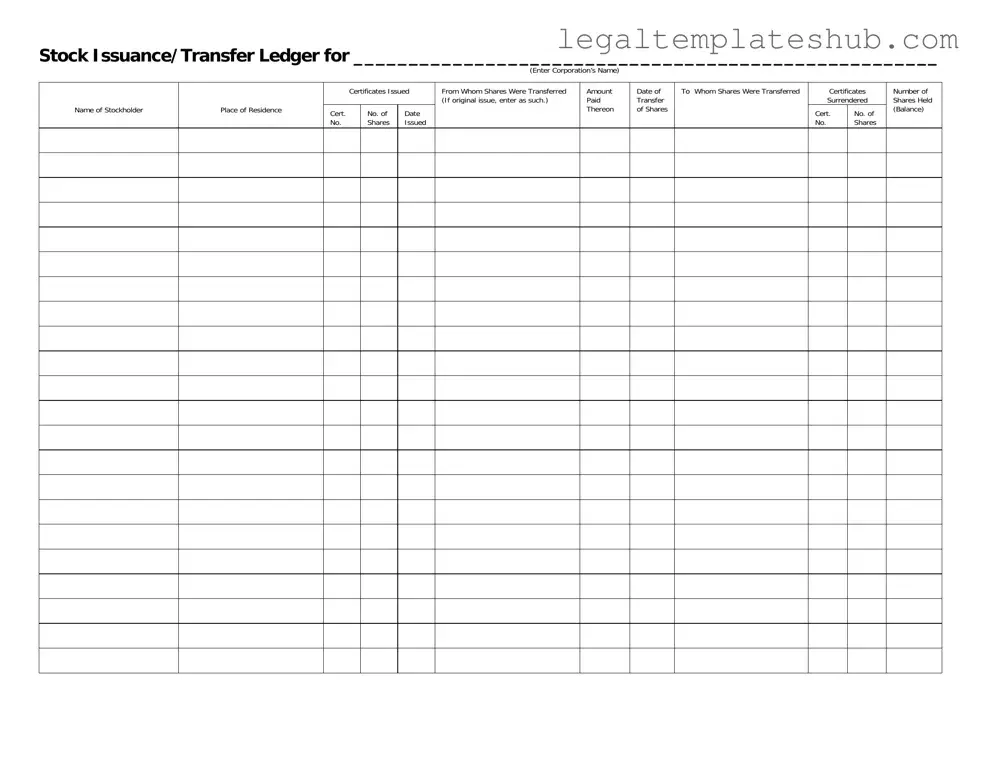Blank Stock Transfer Ledger PDF Form
The Stock Transfer Ledger form is a crucial document that records the issuance and transfer of shares within a corporation. This form captures essential details such as the stockholder's name, the number of shares issued, and the parties involved in the transfer. Ensuring accurate completion of this form is vital for maintaining clear ownership records and facilitating smooth transactions.
Ready to fill out the Stock Transfer Ledger form? Click the button below to get started!
Access Editor
